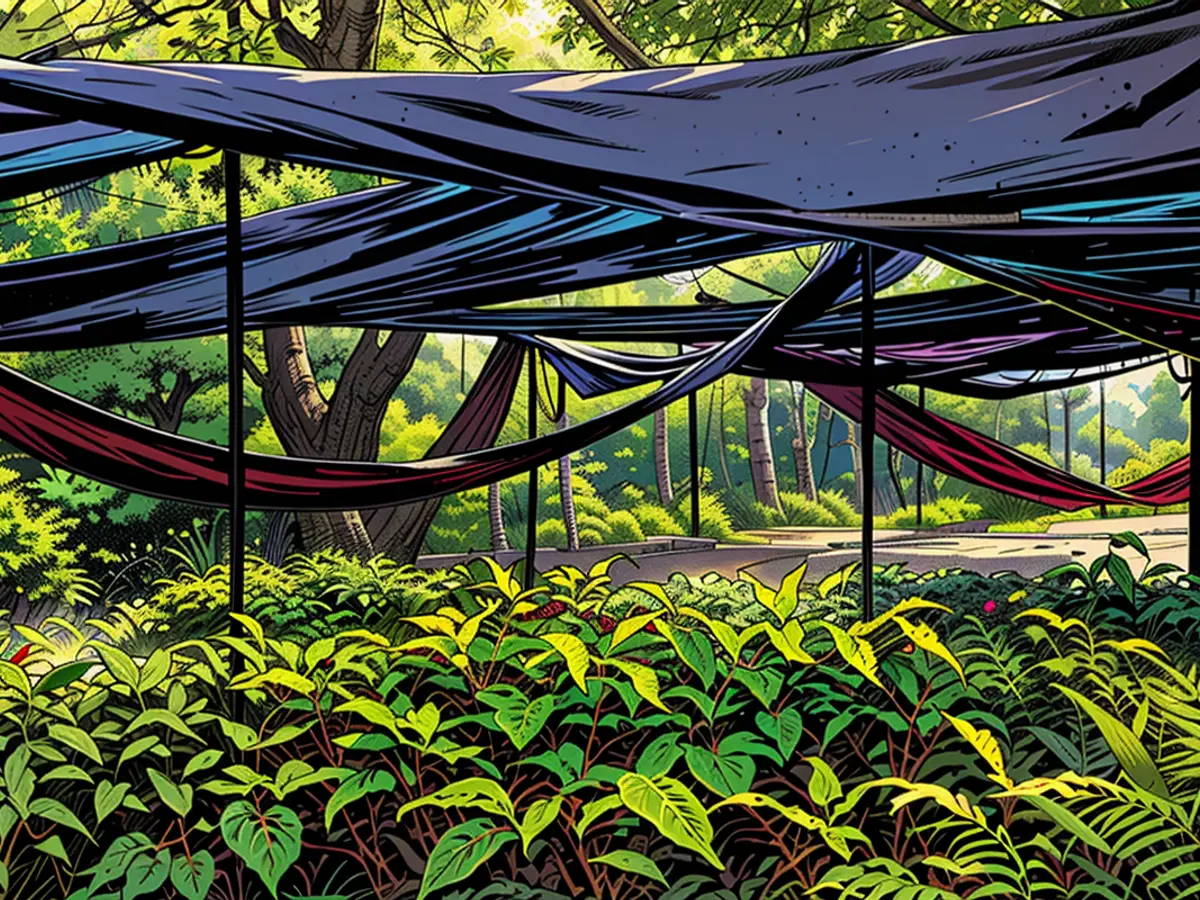Guarding Your Flower Bed Against a Summer Heat Wave
It's no surprise: The climate is transforming. As weather patterns shift, they pose significant challenges for people and harm agriculture, including your backyard garden. Growing up in Arizona, gardening was a hindrance, to say the least. Even in the Pacific Northwest, where I currently reside, "heat domes" pose issues, and I witness fellow gardeners grappling with these issues.
Individuals in my region construct intricate installations to shield their summer vegetables: umbrella statues and white sheets are dispersed everywhere. In gardening circles, watering strategies are hotly contested. However, here's expert advice that can genuinely benefit your summer garden during a heat wave:
Prioritize low tunnels and shade cloth
Umbrellas provide temporary relief, but they are not a long-term solution. With climate change, it's time to invest in lasting infrastructure. Sheets provide some help, but what you truly require is shade cloth. Construct a sail-like structure with this black fabric over your most vulnerable garden spots. You can purchase it in various degrees of light exclusion. For instance, a 50% shade cloth will block out 50% of UV rays and sunlight. Your local garden center (or Amazon) sells it by the foot.
Avoid letting it touch your plants or vegetables, as ventilation is essential. Much shade cloth includes grommets in the corners for easy attachment to trees or fences. If your setup lacks grommets, acquire simple green steel posts from Home Depot, and use a mallet to anchor them in place. Alternatively, utilize PVC pipe and pipe straps to build a low tunnel to support the shade cloth.
Determining what to safeguard and what to leave to nature is crucial, and historically, we have focused on the wrong items. Most people rush to protect their nightshades, such as tomatoes, eggplants, and peppers. Although they can endure sunscald, these plants thrive in sunlight and heat and should be the final consideration after other plants are secured. They will not pollinate in high temperatures and may shed their blossoms above 95°F, but this is not the main concern during this season—preserving the fruit is.
Peas are a short-season crop. By the time the heat dome hits, they have usually tapped out for the season. And I wouldn't bother covering annual flowers, as artichokes, roses, grass, and lilacs, irises, peonies, and tulips are already past their prime by now.
Focus on protecting these plants
Begin with your hydrangeas, which cannot handle heat domes. Cover your berries, as they are affected in two ways—the leaves get severely burned, and the heat scald causes the berry crop to fail. This is true for strawberries and blueberries, but particularly for cane berries like raspberries, blackberries, and boysenberries.
Lettuce and cabbage are particularly susceptible to heat, so coverage is essential. Any tender, leafy annual plant would fall into this category.
Consider covering your cucumbers in this weather to prevent them from getting bitter and to give them a fighting chance to continue pollinating. Unlike other plants, they may still be fruiting.
Watering is a complex issue
The notion that watering during the day harms plants by causing them to burn has been debunked, but there's no denying that roots seek out water, and if you water at midday, the roots migrate closer to the surface, where they risk getting burned. Water early in the morning and water deeply at the root level, not overhead. If you water deeply enough, you may not need to water every day. Check the soil by sticking your finger in it and feeling if it's dry or moist a few inches down. This is your guide.
Overwatering is something to be cautious of, and this is particularly relevant for plants like cucumbers and tomatoes, as they may still thrive but develop blossom rot during the heatwave. The trick is consistent watering and nutrients. If you fertilize your plants (and you should, weekly), ensure that fertilizer is applied in the morning, after watering. Avoid surface treatments during a heatwave.
Established plants are more likely to survive
Unfortunately, heat waves are happening as we transition to fall gardens, which is a challenge for plants that have been in the ground long enough to establish strong root systems to sustain them. Tender seedlings, however, don't have that, and they require more attention. This may mean selective shading or hand-watering to supplement what your drip system provides.
What often gets neglected is that well-established trees and shrubs, including large ones, need a thorough soaking several times each summer. By soaking, I mean a slow drip over several hours so it can be absorbed into the ground. Additionally, the roots of mature plants spread out as the plant grows, so when watering, consider the spread of the roots and focus your efforts there. Soaker hoses are helpful for this.
If you're into gardening, you're probably aware of your specific zone, but you might not be privy to the fact that certain areas have been relocated due to climate change. This change is here to stay. When designing your garden, take into account structures for shelter and drip-irrigation.
Consider carefully what you plant and where: Opt for heat and drought-resistant plants. Pay close attention to a plant's preference for sunlight or shade, and plant accordingly.
Train your plants to conserve water by avoiding overwatering, allowing them to develop robust roots systems that require less water over time.
Mulch like crazy
The significance of mulch in maintaining plant hydration and heat resistance cannot be overstated. A couple of inches of straw, wood chips, or any organic mulch in your beds can drastically alter your plants. It keeps the soil moist. Ensure that no mulch is in contact with the base of plants or trees, as this can foster disease. However, feel free to lay it down elsewhere. Don't forget, in areas with Chip Drop, you can acquire free wood chips.
Don't forget to harvest crops in a timely manner
Any edible produce should be brought indoors. Even if you typically allow certain crops to ripen as needed, it's wiser to bring them in early to prevent cooking on the vine. This applies to tomatoes, eggplants, peppers, green beans, cucumbers, and berries. Make sure to check for ripe produce every evening or morning when the temperature is cool enough.
To further protect your home garden during a heatwave, consider using a hose with drip irrigation to ensure that water reaches the roots of your plants without causing them to burn. This method is particularly beneficial for heat-sensitive plants like lettuce and cabbage.
Remember to regularly check your garden for signs of heat stress, such as wilting leaves or absent blossoms. By catching these issues early, you can act quickly to provide additional shade or water to help your plants recover.








